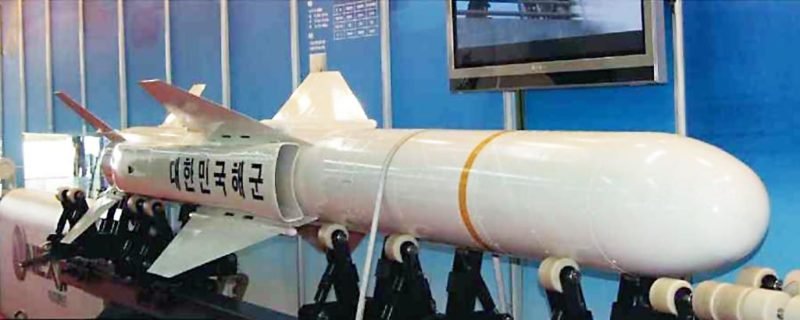South Korean Arms Exports to Latin America

In July 2019, reports started emerging that the Argentine Air Force had selected the Korean FA-50 as its interim fighter type. If this is true, KAI has not obtained formal notification of this decision to date, would mark the latest in an impressive series of achievements for the Korean arms industry in breaking into Latin America.

Prior to this, as far back as August 2016, the first photographs of the BAP Ferre (PM-211) appeared in the livery of the Peruvian Coast Guard. This sound, albeit decidedly unremarkable, the ship would not have warranted a second glance even by the relatively modest naval standards of the region but for the fact that it was the latest example of the quiet penetration of the Latin American arms market by South Korea (or more accurately the Republic of Korea – ROK). Unheralded, the ROK has made remarkable inroads: securing contracts from countries in the region for the supply of assault rifles, aircraft, anti-ship missiles and warships, and entering into joint ventures with local shipyards for the design and construction of patrol vessels as well as with Peru’s fledgling aviation industry to assemble basic trainer aircraft. And it has ambitions for further sales in the years to come.
Placing a monetary value on ROK arms exports to the region is difficult as these exports are comprised of three discernible categories:
- Outright sale of either weapons or military platforms such as ships and aircraft
- Design and Co-production joint-ventures
- Transfers of surplus naval vessels
Furthermore, many of these exports were done as part of government-to-government transactions – spearheaded by the ROK’s very active diplomatic missions – which may have involved cooperation in other spheres, thus making estimates of precise values somewhat inaccurate. What is known, however, is that the ROK has exported defence items worth USD 3 billion annually for three consecutive years of either weapons or platforms such as ships or aircraft.[1] Between 2011 and 2014, ROK arms exports grew at an average rate of 11.6 per cent per annum. In 2015, however, its arms exports recorded a fall of 3.4 per cent.[2]. Latin America accounts for about USD 300 million of the ROK’s arms exports annually, if joint venture investments are taken into account.[3]
While the sales themselves are of importance, the ROK is using arms exports as a way to build influence and explore avenues of defence cooperation within Latin America and has employed an interesting and effective combination of gifting equipment combined with joint ventures with local industry. This has the dual effect of increasing exports but also forging partnerships with domestic industries in a region where the ROK has hitherto had a very minimal defence relationship.
Military Sales

In 2012 ROK secured a contract to supply SSM-700k Haeseon anti-ship missiles to the Colombian Navy for the latter’s upgraded Almirante Padilla class light-frigates.[4] This was significant as it marked the first sale of missiles from a country other than the United States, Russia/ former USSR or one of the European Union member states to the Latin American region. Later that year, the ROK signed a contract to supply 20 KAI KT-1 basic trainer aircraft to the Peruvian Air Force, again marking a major breakthrough for aircraft from hitherto non-traditional sources.[5] In both cases, the sales were made through intergovernmental agreements and are indicative of the ROK’s willingness to circumvent the tendering and procurement processes of the respective countries by leveraging its bilateral relations to foster these foreign military sales. It should be noted that the ROK had previously been successful in selling a small quantity of K2 assault rifles to Mexico and a supply tanker (Ciudad Bolivar T-81) to the Venezuelan Navy.
Joint Ventures for Design and Co-production
The deal to supply the KT-1 basic trainer aircraft to Peru included a provision whereby 16 of the 20 aircraft would be assembled by the Peruvian maintenance, repair and overhaul firm SEMAN. This would represent a quantum leap for Peru’s nascent aviation industry and reflects ROK’s willingness to establish assembly facilities for products within the region. The joint-venture concept was significantly enhanced in the naval sphere through the establishment of two joint-ventures between STX Offshore and Shipbuilding of the ROK and COTECMAR of Colombia and SIMA of Peru respectively. The 2013 deal with SIMA of Peru has a value of USD 82.2 million and is for the construction of five 500 ton patrol boats. Based on the Taeguk class serving in the ROK Coast Guard, and the first in a total of 10, these vessels will significantly bolster the Peruvian Coast Guard while simultaneously boosting SIMA’s shipbuilding capability.[6] The first two vessels were commissioned in March 2016, closely adhering to the stipulated contractual timelines.[7]
COTECMAR and STX have embarked on a much deeper collaboration which has seen a joint design and development effort to develop a 250 ton 46metre patrol boat for the Colombian Navy. The CPV-46 project could total as many as 14 vessels, with two of them being built in the ROK and the rest at the COTECMAR yard in Colombia. Of interest is the fact that STX has given the export rights of the design to COTECMAR. Despite having only commissioned a single locally built vessel (two more having been delivered from the STX yard in Korea), COTECMAR has offered the type for export.[8] The willingness of STX to partner with COTECMAR for the design of these vessels is in stark contrast to the practice of European firms such as Damen which have been willing only to allow the assembly of vessels in Colombia but refused to partner in the design process. As COTECMAR has ambitions of becoming a major ship design and ship manufacturing hub in the region, its partnership with STX has stood in good stead while simultaneously enhancing the ROK’s presence in the region.
Transfers of Surplus Military Hardware
The ROK has a long history of transferring surplus naval vessels – usually as they are being decommissioned from its naval service. Over the years, 19 Chamsuri class patrol boats have been transferred to countries such as the Philippines, Ghana, Kazakhstan, Timor and Bangladesh. Despite the fact that the class is now approximately 40 years old, the vessels have given good service and they continue to be offered as free incentives for countries to place orders for Korean vessels.
With this precedent, it is not surprising that ROK has made similar offers in Latin America and has found takers in Colombia and Peru. It is perhaps no coincidence that these two countries are the recipients of this largesse given the contracts secured by STX with COTECMAR and SIMA as noted above. To date, two ex-ROK Navy 1200 ton corvettes have been transferred – one each to Colombia and Peru. Colombia took delivery of a Donghae-class corvette (ex RoKS Anyang – PCC-755), which, after its refit, was commissioned into the Colombian Navy as the ARC Narino (CM-55).[9] Peru, for its part, availed itself of a Pohang class corvette of the Flight-II subgroup (ex RoKSGeongju PCC-758), which has been commissioned as the BAP Ferre (PM-211) mentioned above.[10]
Argentina Success?

On 7th August 2019, it was confirmed that Argentina and Korea were indeed negotiating for the sale of KAI FA-50 aircraft [11]. This sale, perhaps of ten aircraft, would be significant for it would mark the first non-US, European or Russian supersonic combat capable aircraft sale to a Latin American country. That the ROK has achieved this – should the sale materialize – speaks volumes to its sound strategy in approaching the regional arms market.
Sound Strategy
The combination of approaches adopted by the ROK towards arms sales in Latin America has yielded significant results in a very short period of time. Making effective use of its diplomatic missions, the ROK has played to its military-industrial strengths while making careful assessments of the requirements of its potential customers. Its willingness to enter into joint ventures and even design partnerships is uncommon in a region where direct sales are usually the norm. As the ROK deepens its involvement in the region, it remains to be seen whether it is able to make further progress in respect of arms exports to the region but should its Argentina foray prove successful, there is every chance that the ROK will emerge as a major arms supplier to Latin America in the foreseeable future.
- 1. J. Grevatt, “South Korean defence exports over USD3 billion in 2015,” IHS Jane’s Defence Weekly, 19 January 2016,
- 2. Choi Sung-Jin, Korea’s defense industry languishes amid global boom .
- 3. S. Mayper, “The evolution of South Korean defense industry: an emerging global player,” Second Line of Defence, 16 November 2013,. And J. Kim, “South Korea building up military, rising as arms exporter,” UPI, 24 February 2015,
- 4. D. Mitch, “Almirante Padilla class light frigates of the Colombian Navy,” Naval Analyses, 27 September 2014,.
- 5. G. Waldron, “Peru signs deal for 20 KAI KT-1 basic trainers,” Flight Global, 8 November 2012,
- 6. A. Marchessini, “Botadura de las PatrullerasMaritimasClase Rio Canete de la Marina de Guerra del Peru (in Spanish),” Defensa.com, 4 December 2015,
- 7. “Peruvian Navy commissions first of new class of large patrol vessels,” Warship Technology, July/August 2016, Accessed 18 August 2016.
- 8. E. Saumeth, “Los dos patrulleros CPV-46 encargados a Corea y yaestanen Colombia (in Spanish),”Info Defensa, 15 January 2015,
- 9. R. Garcia, “ARC Narino, la Armada de Colombia recibeoficialmentesunuevacorbeta (in Spanish),” webinfomil.com, 31 July 2014,
- 10. “South Korea to transfer Pohang-class corvette “Gyeongju” to Peru,” Military Reconnaissance, 27 October 2015,
- 11. “Argentina confirma las negociacionesoficiales por el FA-50”Zona Militar 7 August 2019


















